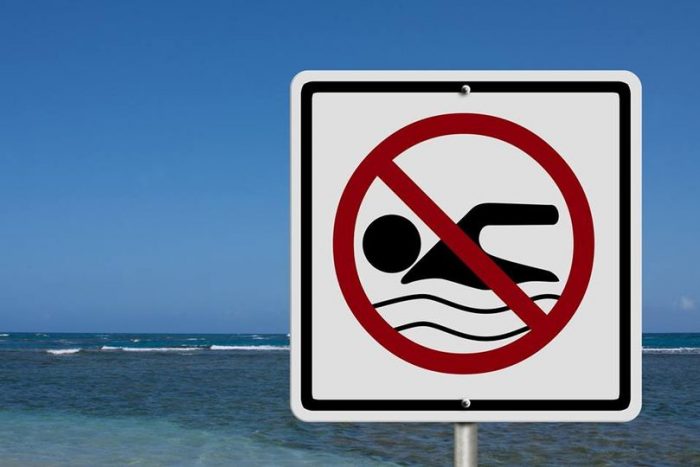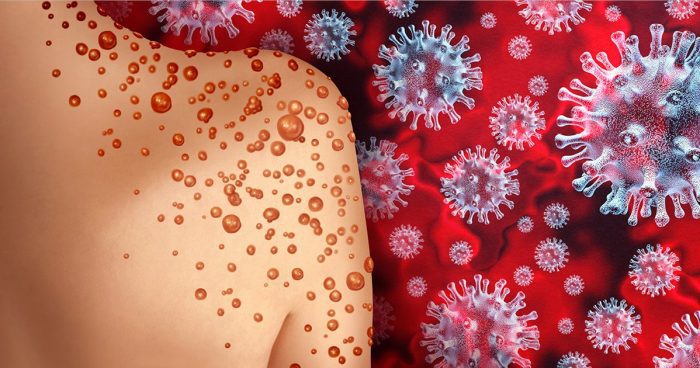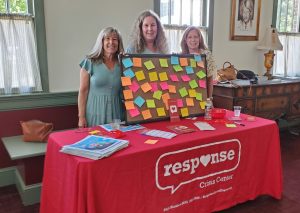Five beaches remain closed as of July 17.
Due to heavy rainfall yesterday and rain forecast for Monday, the Suffolk County Department of Health Services has issued an advisory against bathing at 47 beaches listed below. The advisory is based on the potential that bacteria is in excess of New York State standards.
The beaches covered by the advisory are located in areas that are heavily influenced by stormwater runoff from the surrounding watersheds or adjacent tributaries, and, because of their location in an enclosed embayment, experience limited tidal flushing.
Health officials recommend that bathing and other water contact be suspended in affected areas until the waters have been flushed by two successive tidal cycles, at least a 24 hour period, after the rain has ended. This advisory will be lifted Tuesday, July 20, 2022, unless sampling reveals elevated levels of bacteria persisting beyond the 24-hour period.
Additionally, Bayport Beach, which closed on Friday, and four more beaches that closed on Saturday remain closed due to excess bacteria. The four beaches that closed on Saturday include Amityville Village Beach, Tanner Park Beach in Copiague, Benjamin Beach in Bay Shore, and Ronkonkoma Beach in the Town of Islip. The beaches will reopen when bacteria subsides.
Beaches affected by the advisory:
| Sound Beach POA East | Brookhaven | Sound Beach | Advisory | Rainfall related |
| Sound Beach POA West | Brookhaven | Sound Beach | Advisory | Rainfall related |
| Tides Beach | Brookhaven | Sound Beach | Advisory | Rainfall related |
| Beech Road Beach (NSBA) | Brookhaven | Rocky Point | Advisory | Rainfall related |
| Broadway Beach (NSBA) | Brookhaven | Rocky Point | Advisory | Rainfall related |
| Friendship Drive Beach (NSBA) | Brookhaven | Rocky Point | Advisory | Rainfall related |
| Shoreham Village Beach | Brookhaven | Shoreham | Advisory | Rainfall related |
| Shoreham Beach | Brookhaven | East Shoreham | Advisory | Rainfall related |
| Stony Brook Beach | Brookhaven | Stony Brook | Advisory | Rainfall related |
| Shoreham Shore Club Beach | Brookhaven | East Shoreham | Advisory | Rainfall related |
| Miller Place Park Beach | Brookhaven | Miller Place | Advisory | Rainfall related |
| Scotts Beach | Brookhaven | Sound Beach | Advisory | Rainfall related |
| Woodhull Landing POA Beach | Brookhaven | Miller Place | Advisory | Rainfall related |
| Bayberry Cove Beach | Brookhaven | Setauket-East Setauket | Advisory | Rainfall related |
| Bayview Beach | Brookhaven | Setauket-East Setauket | Advisory | Rainfall related |
| Grantland Beach | Brookhaven | Setauket-East Setauket | Advisory | Rainfall related |
| Indian Field Beach | Brookhaven | Setauket-East Setauket | Advisory | Rainfall related |
| Little Bay Beach | Brookhaven | Setauket-East Setauket | Advisory | Rainfall related |
| Soundview Beach Association Beach | Brookhaven | Old Field | Advisory | Rainfall related |
| Terraces on the Sound | Brookhaven | Rocky Point | Advisory | Rainfall related |
| Eagle Dock Community Beach | Huntington | Cold Spring Harbor | Advisory | Rainfall related |
| Cold Spring Harbor Beach Club Beach | Huntington | Lloyd Harbor | Advisory | Rainfall related |
| West Neck Beach | Huntington | Lloyd Harbor | Advisory | Rainfall related |
| Lloyd Neck Bath Club Beach | Huntington | Lloyd Harbor | Advisory | Rainfall related |
| Lloyd Harbor Village Park Beach | Huntington | Lloyd Harbor | Advisory | Rainfall related |
| Gold Star Battalion Park Beach | Huntington | Huntington | Advisory | Rainfall related |
| Head of the Bay Club Beach | Huntington | Huntington Bay | Advisory | Rainfall related |
| Nathan Hale Beach Club Beach | Huntington | Huntington Bay | Advisory | Rainfall related |
| Baycrest Association Beach | Huntington | Huntington Bay | Advisory | Rainfall related |
| Bay Hills Beach Association | Huntington | Huntington Bay | Advisory | Rainfall related |
| Crescent Beach | Huntington | Huntington Bay | Advisory | Rainfall related |
| Knollwood Beach Association Beach | Huntington | Huntington | Advisory | Rainfall related |
| Fleets Cove Beach | Huntington | Huntington | Advisory | Rainfall related |
| Centerport Beach | Huntington | Centerport | Advisory | Rainfall related |
| Huntington Beach Community Association Beach | Huntington | Centerport | Advisory | Rainfall related |
| Centerport Yacht Club Beach | Huntington | Centerport | Advisory | Rainfall related |
| Steers Beach | Huntington | Northport | Advisory | Rainfall related |
| Asharoken Beach | Huntington | Asharoken | Advisory | Rainfall related |
| Hobart Beach | Huntington | Northport | Advisory | Rainfall related |
| Crab Meadow Beach | Huntington | Northport | Advisory | Rainfall related |
| Wincoma Association Beach | Huntington | Huntington Bay | Advisory | Rainfall related |
| Valley Grove Beach | Huntington | Eatons Neck | Advisory | Rainfall related |
| Prices Bend Beach | Huntington | Eatons Neck | Advisory | Rainfall related |
| Short Beach | Smithtown | Nissequogue | Advisory | Rainfall related |
| Nissequogue Point Beach | Smithtown | Nissequogue | Advisory | Rainfall related |
| Long Beach | Smithtown | Nissequogue | Advisory | Rainfall related |
| Schubert Beach | Smithtown | Nissequogue | Advisory | Rainfall related |























